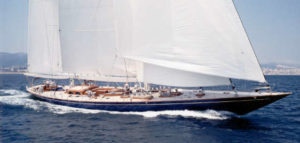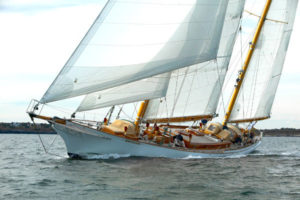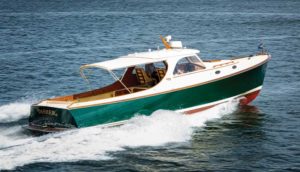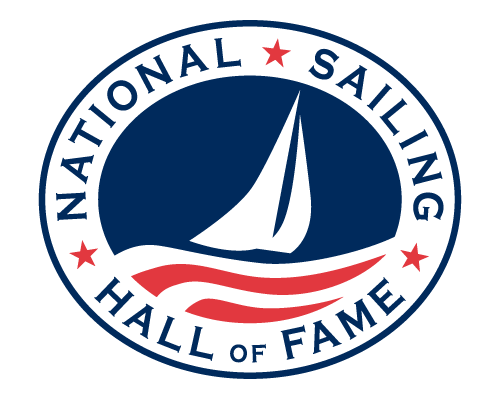PREVIOUSNEXT

Living , Modern
Bruce
King
1939 -
Bruce King and his team have designed some of the world’s most remarkable yachts. His principles are simple: he and his team believe that to be successful, a yacht must be beautiful. He was a prolific designer for Ericson with his fiberglass racers and cruisers, but it was his pioneering use of West System epoxy to construct large super yachts in wood that allowed him to stay true to a classic design. This design typically includes a long overhang and a low freeboard to accentuate the classic sheer and has come to be a signature of many of his classically beautiful yachts. Notable awards: From 1964 to 2004, Bruce King produced boat designs of varied types, reaching an incredible number of more than 7,000 existing boats. These include the early production boats, built mostly by Ericson Yachts with some by Islander, and the large custom sailing yachts. He also designed some of the radical yachts of the early seventies, and more recently the Hinckley water jet boats and the Bruce King Superyachts. According to King, “We have always believed, where yachts are concerned, that technology and utility are only part of the story. To fulfill both the utility and technology requirements, and to do so in a manner encompassing as much visual satisfaction as possible, must be the goal of a skilled designer. Technology is fleeting; it is constantly changing. Aesthetic beauty is timeless, and it alone provides the motivation for preservation. It is hoped that as present technology gives way to the new, we will continue to be able to impart to our designs an appeal, both tangible and intangible, that will allow them to endure.” Following is an excerpt from an article on the site boattest.com that was written about Whitehawk, a radical Bruce King-designed yacht built in 1978. The article does a nice job of explaining many of the features that set his boats apart from others, especially at that time. Whitehawk was built in 1978 to a Bruce King design. King was a hot yacht designer in that era and was most famous for the line of Ericson fiberglass cruiser/racer sailboats which he had designed. Whitehawk was built in Rockland, Maine, at Lees Boat-shop by O’Lie Neilson, and at the time was the largest vessel ever built with the West System product using the cold molding process. West System was in its infancy. In fact, Whitehawk was one of the largest boats built in America in that decade of any material and preceded the era of megayachts by a few years. Origins of her Fame Because she was so large, and because she was built all of wood in an age of fiberglass, she caught the eye and imagination of the boating press, and a number of articles were written about her. Month after month, the yachting magazines chronicled her build progress until her launch in 1978. As a result, generations of yachtsmen have followed her ever since, and she is one of the most famous sailing yachts in America. Genuine Tree Wood She was designed like a classic wooden yacht with all of the brightwork and luxury details that would have pleased the Astors, Morgans, or Vanderbilts. On deck and below she looked and was built very much like yachts or yore. But her hull was different. It was built with a new process of cold molding that lightened the boat somewhat and made her more seaworthy at the same time. This process was popularized by the Gougeon Brothers and their development of the West System of epoxy/wood construction in Whitehawk was the proof of concept. Rather than being built in the conventional manner of planks — that had to be caulked and nailed to heavy frames every few feet or so — cold molding involves strips of epoxy saturated wood laid over a jig that formed the hull’s shape. The epoxy not only glued the wood together, but it also created an impenetrable barrier to water. It was a radical idea at the time, but it turned out to be a good one and the West System continues to be a popular method of wood construction. Topside Finish Multilayer-planked cold molding with epoxy eliminated the need for many frames, which lightened the boat and also made her hull more puncture-resistant. With the elimination of most frames, more livable room was created inside of her 20’6” (6.25 m) beam. Her exterior surface was faired and then painted. In one of her recent refits, her hull was covered in Alexseal, a premium polyurethane topcoat technology that employs UV absorbers. The result is a glass-like finish with high gloss. We had the opportunity to inspect her hull from the waterline to her rail both from the ship’s tender and when swimming around her and can report that her topside finish is flawless. Her Keel and Centerboard Whitehawk draws 7’6” (2.28 m) which allows her to sail into many places where a sailboat of this size might not be able to enter, thanks to her stainless-steel centerboard. It increases her draft to 15’ (4.57 m) and improves her performance to windward. The hydraulic centerboard has holes in the bottom, so it fills with water when deployed. The combination of her cold molded hull and her centerboard make her relatively fast off the wind, and while she is by no means a down-wind sled like a Bruce Farr design, she is nevertheless competitive on the classic yacht regattas that she enters most years at venues from Antigua to Nantucket. Built for Offshore Cruising She displaces something on the order of 82 tons, which makes her a substantial yacht, and means that it takes a bit of wind to move her briskly. This makes her ideal for offshore work and, indeed, on her delivery last winter from Newport, Rhode Island, to Antigua, she saw winds up to 35 knots in the north Atlantic and a speedy passage south. During our own sail south of Antigua, she handled winds from 15 to 25 knots (30 knots in squalls) on a close reach with ease, and we recorded speeds up to 11.3 knots. Between the islands, seas often grew from four to six feet and Whitehawk rode over them in comfort – something that can only be enjoyed in a large, heavy sailboat with a 20’6” (6.25 m) beam. A Partial list of Notable Bruce King Yachts: Production Boats designed by Bruce King



[searchandfilter id="7549"]
Preserving America’s Sailing Legacy
Engaging Sailing’s Next Generation
Stay Connected to the National Sailing Hall of Fame
